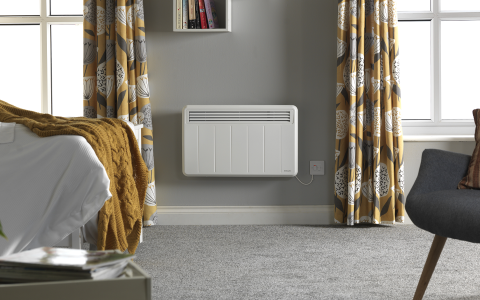Building Regulations in England & Parts L, F and O
With the transitional period now over, the updated 2022 Building Regulations Part L, Part F, and the new Part O, became legally enforceable for all new residential projects.
This is the biggest regulatory change the construction sector has seen in the last 40 years and a stepping stone in our transition away from fossil fuel systems toward decarbonised homes and the electrification of heat - and ultimately, the Future Homes Standard. This shift will impact the way we design buildings and specify technologies.
Have you decided which technologies to specify to achieve compliance for your next residential project?
The new English Building Regulations came into law on the 15th of June 2021. For projects with existing planning permission there is one year transitional arrangements period that applies on plot-by plot basis.
The updated Part L outlines the four compliance metrics for new developments: primary energy target, carbon emissions target, fabric energy efficiency target, and minimum standards for building fabric and building services.
The ventilation system choice under the updated Part F is linked to aritightness as we look to increase indoor air quality. New Part O offers modelling to help mitigate the risk of overheating in buildings.
We designed a simple guide to the changes to Part L and Part F, and the new Part O, and discuss what they may mean for your project.
Our range of HVAC solutions aim to provide future proof technologies to building projects over various sectors.
Request our presentation on Building Regulation changes that answer the most frequently asked questions.
Latest News
Our news section cover building regulations, what the changes to Part L, F, and the new Part of O entail, and what this means for HVAC specification.

Dimplex Modernises Convection Heaters With The PLXE Range
Dimplex has launched its PLXE range of Lot 20-compliant panel heaters, designed to meet the EU’s new Energy Efficiency Directive for ‘fixed’ heating products.

Dimplex’s Edel renewable water heater cuts Jersey homeowner’s bills by 80 per cent
Upgrading his outdated immersion heater to a Dimplex hot water cylinder was all it took for Adrian Hadley to cut his electricity bill by almost 80 per cent - saving him nearly £300 a year.

Using portable heating in a pinch
The temperatures are hitting all-time lows this winter, and if your property uses gas central heating then your boiler will have been working overtime to ensure your home stays warm this season. For the unlucky amongst us, your condensate pipe may have already succumbed to the cold and stopped your heating system from functioning fully – this is the moment you are left scrambling to find supplementary heating as you are told you’re facing a two day wait for a boiler service and repair. Dimplex portable heating is ideal in this situation, seeing you through those times of need until your main heating system is up and running.











